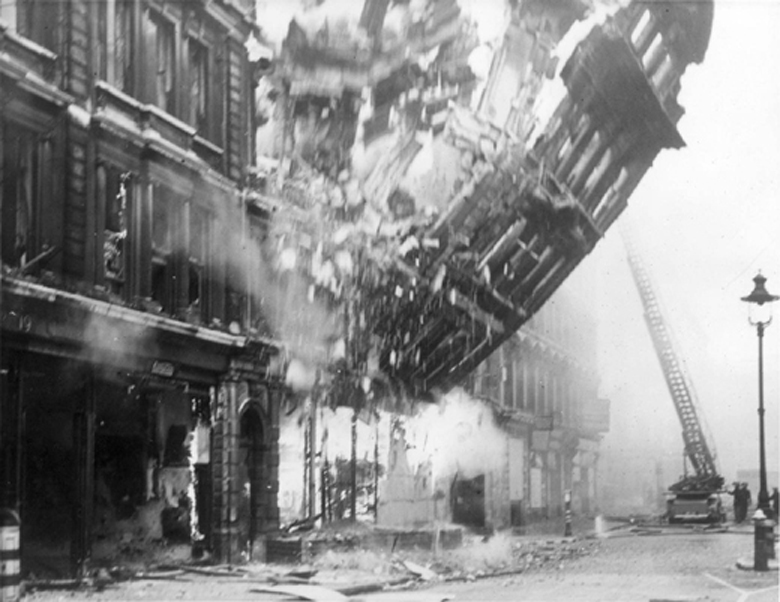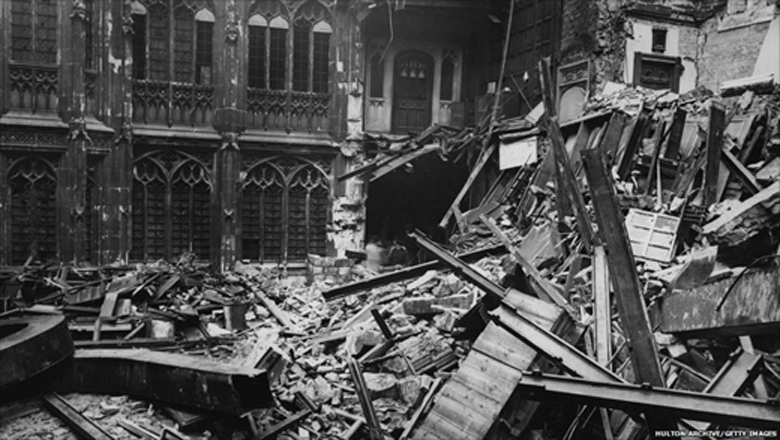Air Operations, Europe
The RAF make a heavy raid on Hamburg losing 5 aircraft in the operation.
[Axis Diplomacy
- Adm Darlan, Vice-President of the Council of Ministers and Minister for External and Internal Affairs meets Hitler at Berchtesgaden to discuss economic and military matters. In exchange for some formal concessions on the part of the Germans, he offers Hitler bases for the German army in Syria.
- Rudolf Hess, the deputy leader of the Nazi Party and second in line to Göring as heir to Hitler, flies to Britain on a bizarre peace mission. Leaving from Augsburg, he drops by parachute from his damaged Me-110 at Eaglesham in Lanarkshire near Glasgow. This is not far from Dungavel House, home of the Duke of Hamilton whom he hopes to contact having met the Duke at the 1936 Olympics. He believes that there is a considerable body of British opinion that is opposed to Churchill but is also anti-Communist and therefore prepared to consider making common ground on these terms with Germany. He is captured by the Home Guard and asks to be taken to the Duke. He tells him who he is, and that he is the bearer of a peace plan. Britain, he maintains, will never be able to win a struggle with Germany, and it is desirable and necessary to find some form of agreement between the two countries to bring the conflict to an end. Churchill is not interested in any such discussions, and in any case Hess is speaking purely for himself.
He is immediately disowned by the German authorities (he has left a note explaining himself to Hitler). The official Nazi announcement says that Hess is suffering from 'a mental disorder'. Hess is therefore imprisoned, first in Buchanan Castle, later in the Tower of London, finally in a villa at Abergavenny in South Wales. On Oct 10, 1945 he is to be taken to Nuremberg to be tried with the other Nazi criminals by the Allies.
Naturally the flight of Hitler's chosen deputy causes a world sensation and is taken as an indication of serious dissensions in the Nazi ranks. The prompt reaction by the Germans to this incident detracts from the propaganda value that the episode might have had for the British.
Battle of the Atlantic
- U-556 attacks the dispersed Convoy OB-318. She sinks the British steamer Empire Caribou (4861t) 465 miles southwest of Reykjanes and the Belgian steamer Gand (5086t) 210 miles southeast of Cape Farewell. 34 crewmen are lost from the British ship, 11 survivors are picked up by the British destroyer Malcolm. 1 crewman is lost on the Belgian ship, 43 survivors are rescued.
- The British ocean boarding vessel Hilary captures the Italian tanker Gianna M. (5719t) 325 miles north of the Azores. The tanker is escorted to join Convoy HG-61 and arrives at Belfast on the 20th. The tanker is renamed Empire Control for British service.
The Blitz
London is hit by another very heavy raid by the Germans. 507 bomber sorties drop 795 tons of bombs starting 2,200 fires from Hammersmith to Romford. Hundreds of streets are blocked and rail traffic is virtually halted. Among the damaged buildings are the Houses of Parliament, Westminster Abbey, the British Museum, the War Office, the London Museum, the Royal Mint, the Law Courts, the Public Records Office, Mansion House, St James Palace and the Tower of London. Many churches and 14 hospitals are hit. 2,154 fires are started. 5,000 houses are destroyed leaving 12,000 homeless. Casualties are 1,436 killed and 1,792 injured. The Germans lose 8 aircraft. This turns out to be the last raid on London until July 27.
|
|
Germany, Home Front
An experimental jet-powered fighter plane, the Me-163, is flown at 621 miles per hour. Work on this jet and the Me-262 is never accelerated despite the revolutionary qualities of the aircraft and the tremendous advantages the Luftwaffe would have enjoyed in defending Germany's cities and production facilities against Allied bombers in the years ahead.
[Iraq
British-led forces from the Jordanian Arab Legion take Rutba. A stronger detachment, Habforce, is being prepared for a move to Rutba. Part of this force, to be known as Kingcol, will them move on to relieve Habbaniyah.
[Italian East Africa
The Gumsa position is taken by British forces.
[Mediterranean
During the night Benghazi is again shelled.
[
